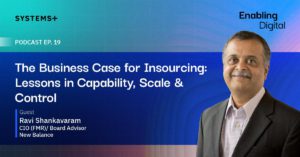Wikipedia actually pointed me to the very intriguing concept of “Omnipotence Paradox” – a premise that considers the conundrum of an omnipotent entity to create a thing so powerful out of their unlimited powers that it begins to limit their powers. More simply explained in the words of Homer Simpson (courtesy: Wikipedia again):
“Could Jesus microwave a burrito so hot that he himself could not eat it?”
Well, we are approaching a similar state of affairs in the retail space today. Marketing has evolved with technology because of which, reaching out to the consumer at all times is no more an add-on; it has become essential. Hence, the buzzword in the industry is omnichannel- which implies being present on as many retail channels as possible, from traditional to online to E-commerce.
Retailers are investing in technology to get on with the times, but some of them seem to flounder because they cannot utilize the power that it gives them. Most of them go as far as considering the front end of the webstores that the customer interacts with, but invariably ignore the backstory of how they are created. The integration architecture at the backend also needs to be part of the omnichannel strategy for it to transcend seamlessly to the customer, and this will change from business to business depending on their size, area of expertise, offerings, finance etc. There is no single way to go about it, and to achieve a customized, positive consumer experience, the backend integration architecture will have to be customized accordingly. Each existing set-up will have multiple individual problems that need a custom-created solution to address them, leading to a very unique overall solution.
According to the Happiest Minds Survey Report of US Retailers (2015), 64% retailers have an omnichannel strategy, but over half of them don’t provide a 360-degree personalized experience. Most of them have clearly identified IT initiatives that are central to building an omnichannel strategy, and have realized that big data and advanced analytics is the bedrock of personalization strategies, however legacy infrastructure and legacy applications are major constraints for CIOs to deal with while trying to embrace the newer technologies they see around them. Incompatible hardware and software only leads to complications and redundancy, a very real problem for all retailers looking at an omnichannel strategy today. No matter how ready retailers are to contend with all that technology can throw at them, without the right backend system in place, retailers will face hiccups no matter how much they strive to overcome them.
Take something like POS systems. The first image that comes to mind when thinking of a POS is a clunky payment processing system mounted on a checkout counter. The POS today, though, is a combination of fundamentals like flexible payment options, high transaction speed and robust security. Let’s take a typical retailer that has outlets and vendors in different locations. Chances are they will also have tie-ups with an E-commerce platform along with order management systems in place to try and deliver products to the customer effectively. Customers can be registered or created everywhere- through anything that is convenient to them, be it an E-commerce tie up, a website or when they physically walk into the store. The issue is that, this might lead to the formation of multiple customer identities, which is problematic for the retailers since it deeply affects their marketing efforts and loyalty programs. It also does not allow for an accurate view of the customers’ journey with brand be it in terms of purchase or post purchase service.
When faced with such a problem, we used our domain experience to create a central customer database which was bi-directional, and led to 100% data accuracy. The data from different points needed to be merged to create individual identities which translated into ONE VIEW of the customer. This database also managed customer preferences while maintaining privacy. All the information was integrated, and brought together in one database. This ensured easy accessibility for the retailers and helped set their marketing and sales goals more effectively. A more synchronized data flow significantly reduced transaction time and facilitated quicker response towards promotions that were executed at the POS.
What this example leaves us with is this – that moving on to the digital platform, requires using the right technology both at the front end and the backend, and is imperative to creating an omnichannel experience. While the end goal is to create a holistic customer experience, it is essential to have the systems, software and applications tightly integrated, which prevents the creation of a digital monster of sorts that can land any business into a financial and reputational hell-hole. Omnichannel retail is not only about being present on all mediums, instead it’s more about getting IT right!






